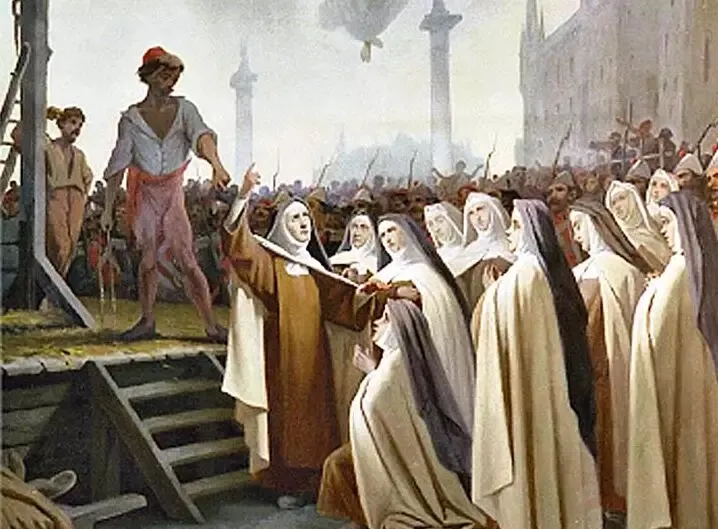Table of Contents
The dark ages of religious wars and persecution appear to have given way to the noble virtue of tolerance. One might be forgiven for concluding that, under Stanford’s winds of freedom, religious repression has become entirely alien to our campus. Not exactly.
At Stanford, the Office of Religious and Spiritual Life (ORSL) is charged with safeguarding the freedom of religious groups by providing a supportive, ecumenical context for spiritual pursuits. This context is enshrined in the “Ethical Framework for Religious and Spiritual Life at Stanford,” norms of respect which every campus-supported religious group must abide by.
However, despite its innocuous name, this framework is really an ideological and subversive attempt to subjugate unique faith traditions under a logically inconsistent new religion: the church of secular progressivism.
At the center of the Ethical Framework is a puzzling line which asks members of Stanford-affiliated religious groups to “affirm we are each part of a broader campus mosaic of faith, ritual, and belief.”
Sounds innocent enough, right? Positively speaking, yes, each religious group is obviously one among many religious organizations on campus with different perspectives. There are around thirty distinct groups on campus, and many more affiliations not sponsored by ORSL are represented among the student body. Perhaps ORSL is just welcoming each faith group.
Yet, a closer inspection draws attention to the distinct use of the word “mosaic,” which insinuates that each little piece, however individually beautiful, is rather insignificant on its own. This attempt to sound affirming in reality devalues and reduces each religion to unremarkable fragments. Each of our faiths are just unimportant, in the grand scheme of things.
Even worse, however, a mosaic is more than just a collection; it is a distinct pattern revealed in the aggregate arrangement of those pieces. It seems, then, that the metaphor of mosaic implies that there is in fact some larger and transcendent picture found only when examining all the pieces—all of the distinct faith traditions—as a unified whole.
This is the central, dangerous dogma of the secular liberalism at the heart of religion at Stanford: no faith is truly complete or fully true. No one can claim that their tradition has the full picture, so we must aggregate them all together. Only in this kaleidoscope of secular liberalism and progressivism can we reach the Truth.
The problem is: religious faiths and their adherents don’t actually believe that.
For instance, the Catholic Church—my religious affiliation—teaches that her faith contains the unique fullness of divinely revealed Truth. To affirm the “mosaic” by viewing Catholicism as just one among a vast sea of other equally “valid” belief systems would thus be to compromise the faith with the condemned heresy of religious indifferentism.
Each religion claims to be a fundamentally unique paradigm of coming to know and understand Truth, Goodness, and Beauty. Each tradition has a distinct claim about the universe, about God, and about what He has revealed. These claims and paradigms are radically different across different faiths, so if one is true, the others must be false. None are truly compatible.
Theism and atheism are not compatible; either there is God or there is not. Christianity and polytheistic faiths are not compatible; either there is one God or there is not. Christianity and Islam are not compatible; either God is Trinity or He is not. Christianity and Judaism are not compatible; either Jesus is the Messiah or He is not.
It would defy basic logic and violate the law of non-contradiction for two religions to be true at the same time, yet the Office of Religious and Spiritual Life effectively forces students to conform to this belief if they are to be a sponsored religious group on campus. So is the implication, then, that nothing is true and that nothing is false? This pretense of the inclusive “mosaic” in fact reflects a relativistic religion (or cult) of logical inconsistency.
And yet none of these anti-religious schemes are particularly original. They are ripped right out of the strategic playbook established and pioneered by the original trailblazer of fanatical secularism: revolutionary France.
First, force religious organizations—like the Catholic Church—to kowtow to the regime and its values with a charter and an obligatory oath, as seen in France’s 1790 Civil Constitution of the Clergy. Then, subtly displace the current paradigm with the regime’s own religion and church. In France, that took the form of the atheistic Cult of “Reason.”
Yet the Revolution failed to snuff out religious devotion. In 1794, sixteen Carmelite nuns and sisters so firmly believed in their God that as they were marched to their martyrdom at the guillotine, they joyfully sang Psalm 116, Laudate Dominum:
“O praise the Lord, all ye nations: praise him, all ye people. For his mercy is confirmed upon us: and the truth of the Lord remaineth for ever.”
The truth of the Lord remaineth forever. The Truth is Truth, and no liberal dogma can forcibly change that. Secular liberalism, then, should not be allowed to dictate or revise what one religious group believes to be true. I do not affirm that there is a “broader campus mosaic” because I believe Catholicism is the Truth, and that there is no other truth. I expect other religious adherents believe the same about their own traditions.
Only one of us can be right, of course, but the contemplative life involves seriously reflecting upon the answer, not taking the relativistic way out. Spiritual vitality and genuine friendship are found not in making each other feel comfortable but in challenging each other to seek, know, and love the Truth.
If ORSL wishes to truly fulfill its mission of fostering spiritual welfare at Stanford, it must stop attempting to mold religious beliefs to its liking. Otherwise, it is clear ORSL is nothing more than its own church for progressivist—and vacuous—doctrines. An office not for true religious and spiritual life, but for revolutionary and secular liberalism.









